As we depart Wrocław, Poland, a final surprise sight - a locomotive readied for launch !?
After a hour's drive, we arrive in Świdnica, Poland, to check out a Lutheran Church.
Welcome to the Peace Square
1652 - NOW
Under the Peace of Westphalia in 1648, which ended the Thirty Years' War, Emperor Ferdinand Ill was obliged by the Swedes to allow Protestants in the hereditary principalities of Jawvor, Glogöw and Swidnica to build one temple each. In this way. the Habsburgs did not recognize the equality of Protestant and Catholic faiths, but treated the building permit as a more or less forced act of tolerance. The permission was granted in 1652, but the building had to be erected outside the city walls - at the distance of the longest cannon shot counting from the city walls, only from perishable materials: wood and clay with straw and sand. Using these materials, the Lutherans built the church in a half-timbered construction. Such building materials, combined with the swampy nature of the terrain, were supposed to contribute to the church's rapid deterioration. However, it did not happen!
With the passing of time the parish grew. Gradually, new buildings (also half-timbered] were built around the church: houses for the clergy and church ministers, schools, farm buildings. In total, there were 22 buildings (18th century). The Evangelical-Augsburg Church in the Republic of Poland is the oldest and largest evangelical (protestant) church and currently the only Lutheran church in Poland. Before 1945 the Lutheran community constituted over 65% of Swidnica's population.
The entire architectural and urban complex did not suffer much damage during World War Il. After the war, the Evangelical-Augsburg parish had its buildings on Peace Square confiscated, except for the church and the presbytery. It was not until the 1990s that they returned to the parish, once again creating a historical enclave. The buildings were successively restored to save this unique place located in the center of Swidnica. The first works involved the Luterheim, then the Bell-ringer's House, the Presbytery, the Bell Tower, the Watchman's House and the House of the Cantor and Vicars. The church building is continually being restored and maintained. At the end of 2021, 40% of the church interior has been covered by restoration works projects.
The Peace Square is a venue for lovers of Baroque, music and architecture, monumental nature, and for all those interested in the history of Silesia and the Reformation. Currently, there are 6 historic buildings around the church available for the inhabitants of Swidnica and tourists who, regardless of their religion and views, take part in socio-cultural events organized here.
In 2001 the Church of Peace was added to the UNESCO World Heritage List, a list of cultural and natural heritage sites of outstanding value to humanity. It is the first Lutheran church built by Lutherans on the list, and the first entry of a cultural property based not only on its material values but also on its spiritual values. In 2017, the entire enclave - the church, the remaining buildings and the cemetery - was listed in the index of Polish Monuments History. This is the highest distinction for historical landmarks ordained by the President of the Republic of Poland.
Here's a bird's eye view - we took a photo of a posting on a storyboard outside the church.
We're off, leaving Poland for the Czech Republic - apparently GPS likes this route to get to Kutná Hora, C.R.
The only indication we've crossed the border is this sign saying we should have our car registered with the prepaid country-wide toll program - luckily we already have done it.
The Sedlec Ossuary is a Roman Catholic chapel, located beneath the Cemetery Church of All Saints, part of the former Sedlec Abbey in Sedlec, a suburb of Kutná Hora in the Czech Republic. The ossuary is estimated to contain the skeletons of over 40,000 people, whose bones have, in many cases, been artistically arranged to form decorations and furnishings for the chapel. The ossuary is among the most visited tourist attractions of the Czech Republic, attracting over 200,000 visitors annually.
Four bell-shaped mounds occupy the corners of the chapel. A chandelier of bones, which contains at least one of every bone in the human body, hangs from the center of the nave with garlands of skulls draping the vault. Other works include piers and monstrances flanking the altar, a coat of arms of the House of Schwarzenberg, and the signature of František Rint, also executed in bone, on the wall near the entrance.
Now moving into Kuntá Hora proper to check out the rest of the sights nearby.
Gerri plays with some sort of art installation, in of all places, outside an art museum.
Gerri plays with some sort of art installation, in of all places, outside an art museum.
St. Barbara's Church: one of the most famous Gothic churches in central Europe and a UNESCO world heritage site. St Barbara is the patron saint of miners (among others), which was highly appropriate for a town whose wealth was based entirely upon its silver mines. Construction began in 1388, but because work on the church was interrupted several times, it was not completed until 1905.
Jesuit College.
Now inside the church (St. Barbara's Church):
From the balcony oustide:
The church organ from the front, and since they allow you to climb steps to an interior balcony, we see a "behind the scenes" view of the less photogenic and wee little horns that make it all work, so many tones and pitches.
Side chapels along the naves, sponsored by wealthy families from ages ago.
Walking out to see more of Kutná Hora.
Church of Saint Ursula's Convent and the city plague column.
Looking back up at St. Barbara's Church and the Jesuit College, and now off to Prague.





















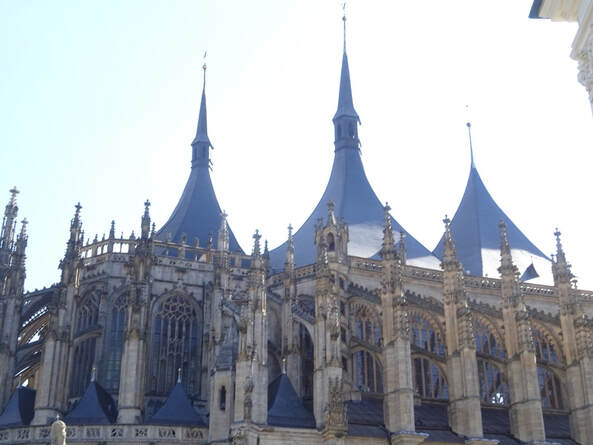
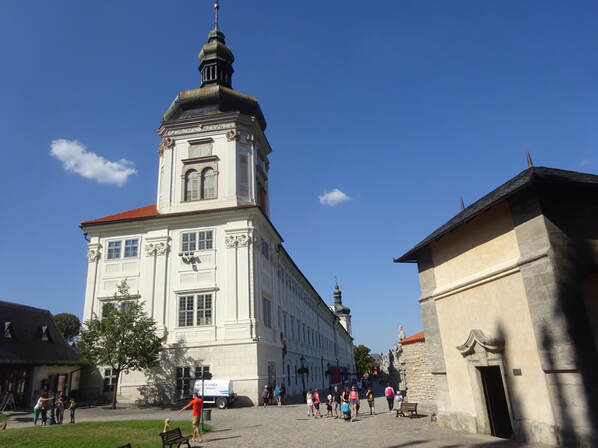



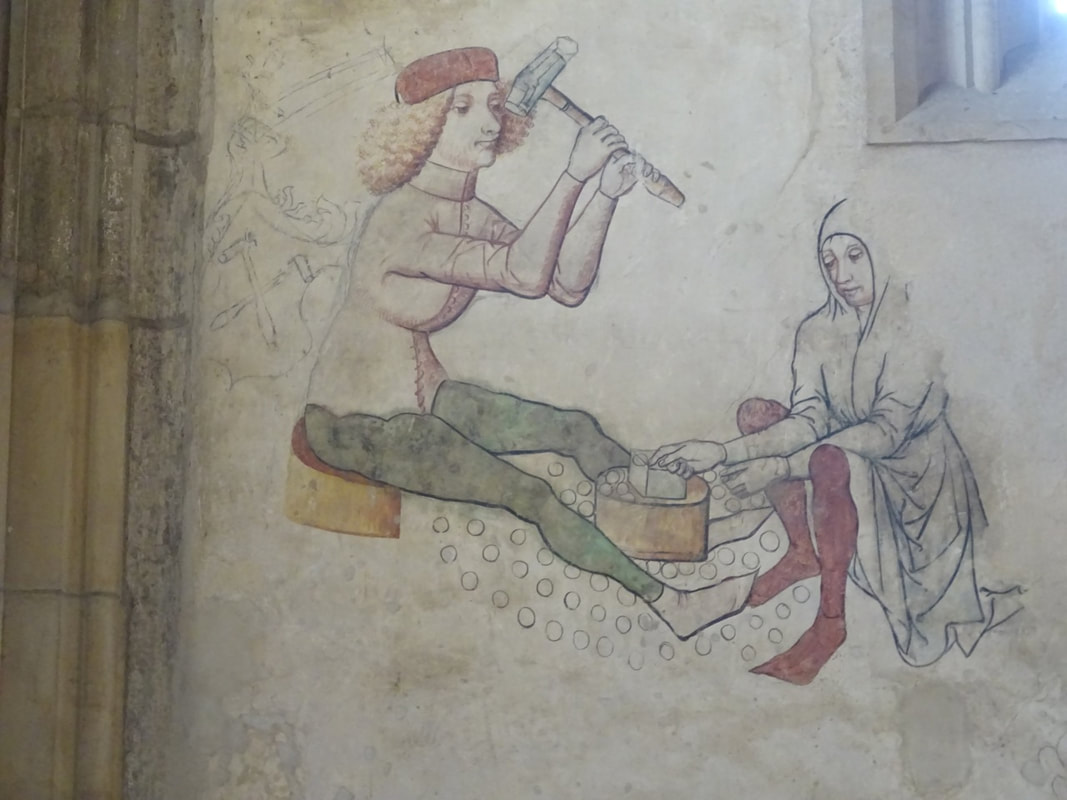

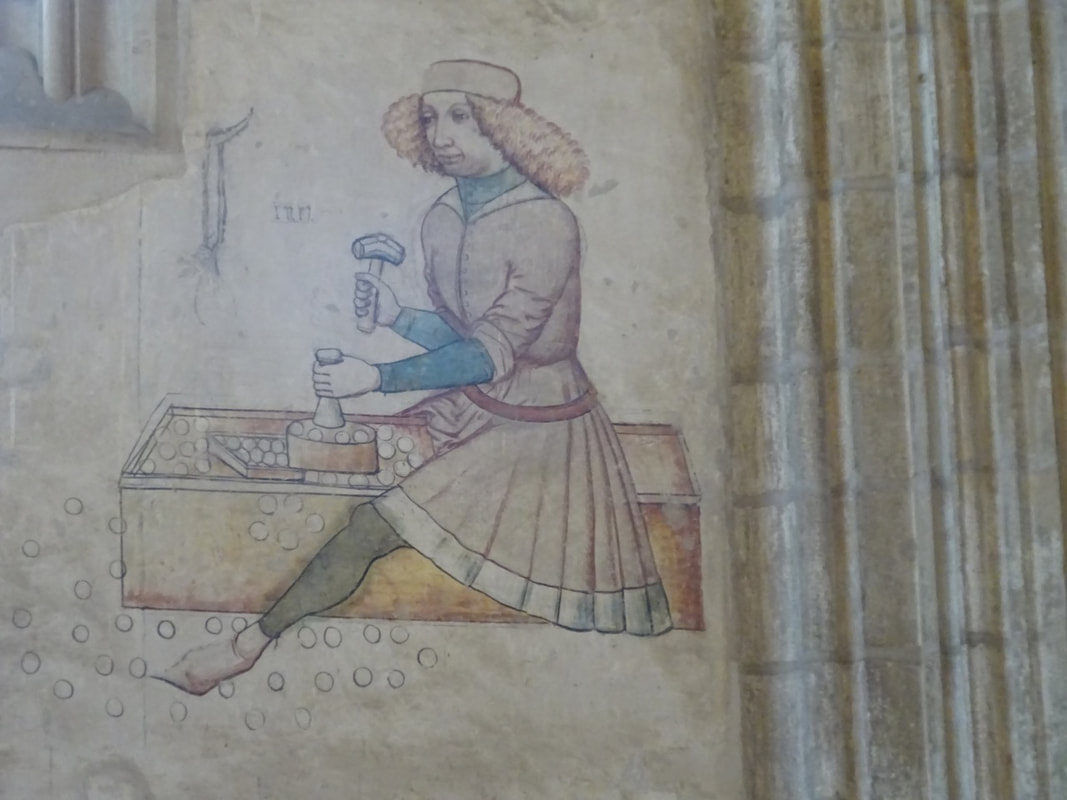



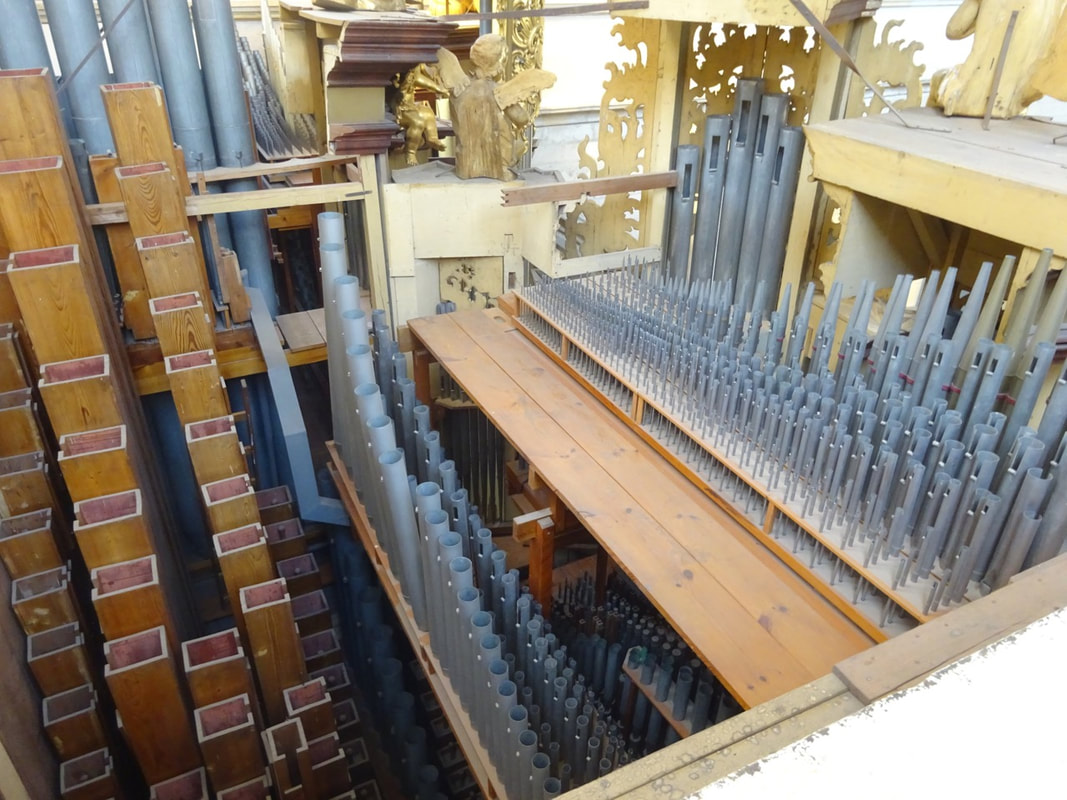













 RSS Feed
RSS Feed
